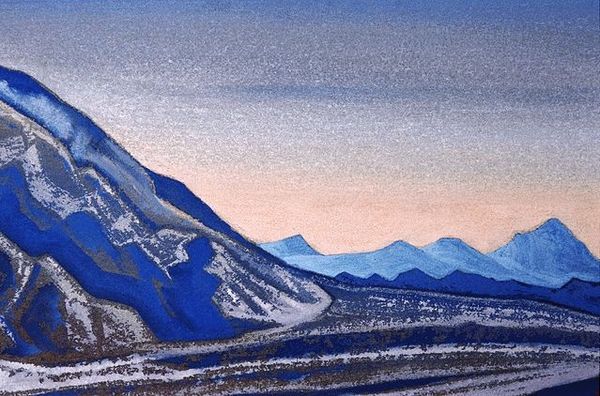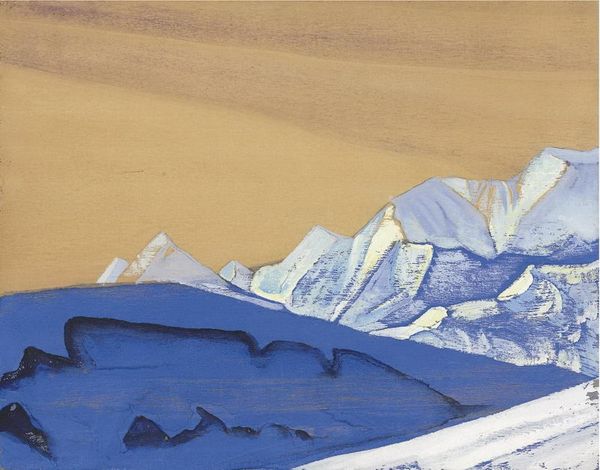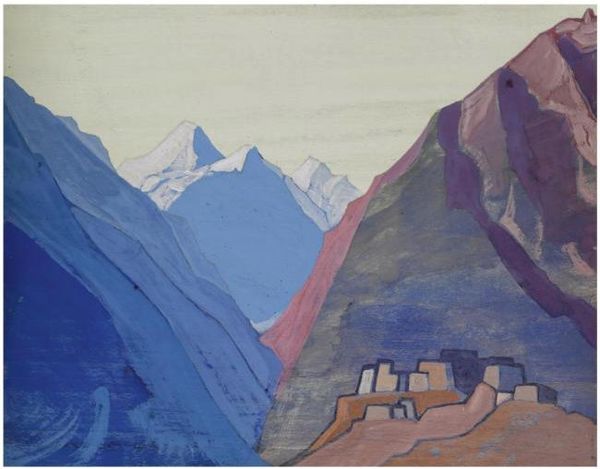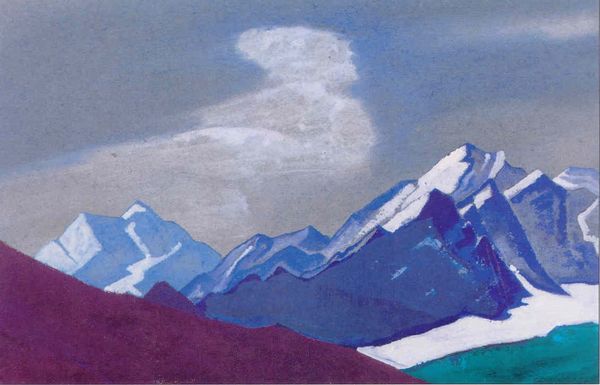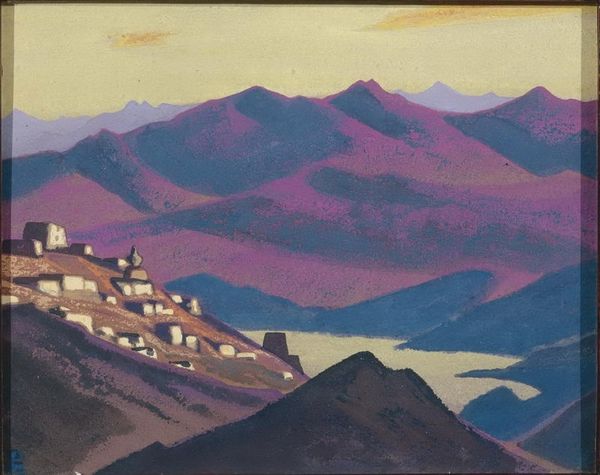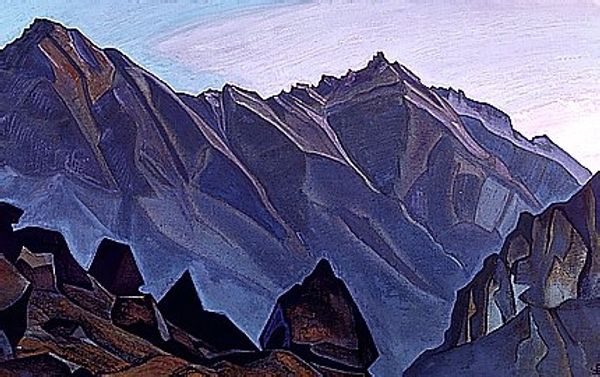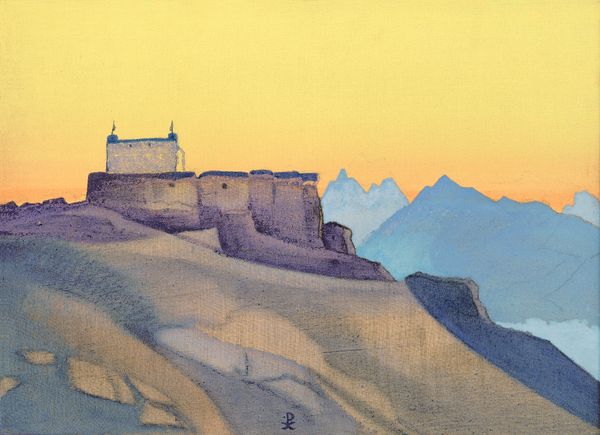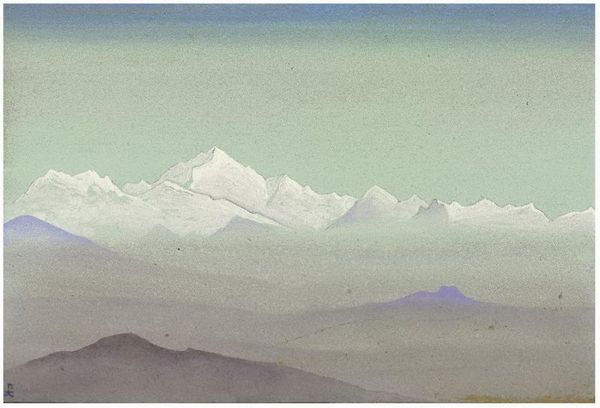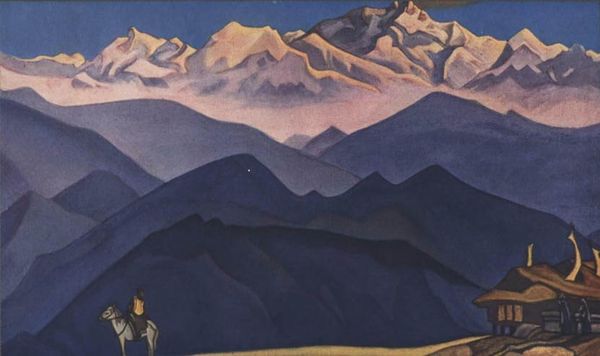
tempera, watercolor, architecture
#
sky
#
tempera
#
landscape
#
nature
#
watercolor
#
mountain
#
arch
#
orientalism
#
surrealism
#
abstraction
#
line
#
architecture
Dimensions: 30.9 x 40.3 cm
Copyright: Public domain
Curator: Here we have Nicholas Roerich’s "Manjusri Cell, Mongolia," painted around 1929. I’m immediately struck by the composition – the strong diagonal of the mountain against that serene, almost minimalist sky. Curator: It’s certainly austere. The cool palette is interesting; a restricted range of blues and purples dominates. I’m curious about Roerich’s materials. Was this tempera chosen for its availability in the region, perhaps influencing the muted tones? Curator: Perhaps. Look at the execution: notice how Roerich uses these thin layers, these deliberate strokes – the overall flatness enhances the symbolic quality. There’s a visual reduction at play. Curator: Reduction is one way to look at it. Considering this piece was created during Roerich's travels through Asia, including Mongolia, it raises questions about cultural exchange and representation. Were local artisans involved in preparing the supports or pigments, impacting the artwork’s material reality? What sort of workshop practices would be applied? Curator: A valid consideration. But, looking simply at the formal qualities, the placement of that architectural cluster is very deliberate, isn’t it? The small structures punctuate the imposing natural form. They create balance. Curator: Or perhaps those structures speak to colonial interventions. Roerich's patronage could have played a part. What resources and whose labour facilitated his journey and artistic practice during that time? Those buildings—how were they affected by external economic factors or political climates? Curator: I concede, there is an external story, however complex, to appreciate here. However, as an exploration of form and tone it makes an impressive image in and of itself. Curator: Indeed, seeing both allows for more comprehensive engagement. I walk away considering more acutely the impact of material conditions on Roerich's creative act. Curator: And I value anew Roerich's skillful rendering, creating such impactful, emotive art using the most limited visual vocabulary.
Comments
No comments
Be the first to comment and join the conversation on the ultimate creative platform.
